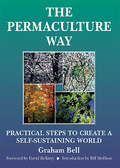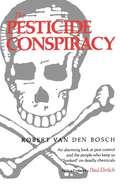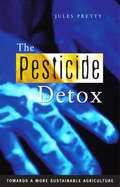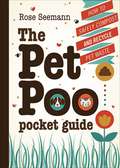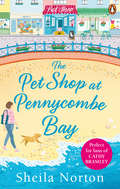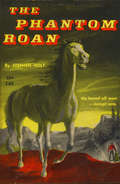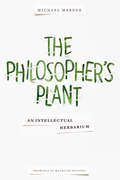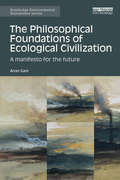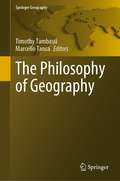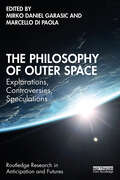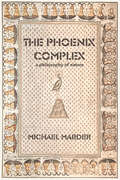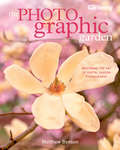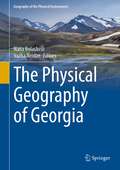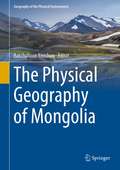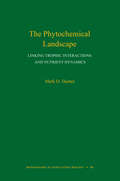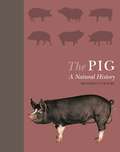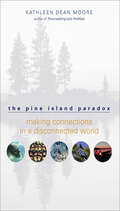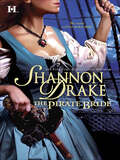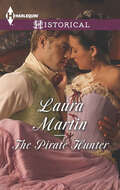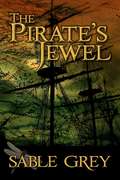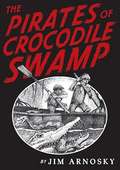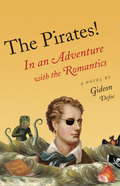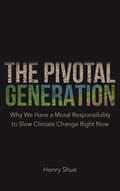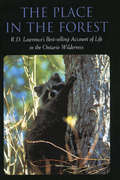- Table View
- List View
The Permaculture Way
by Graham BellThe Permaculture Way shows us how to consciously design a lifestyle which is low in environmental impact and highly productive. It demonstrates how to meet our needs, make the most of resources by minimizing waste and maximizing potential, and still leave the Earth richer than we found it.
The Pesticide Conspiracy
by Robert Van Den BoschProfessor van den Bosch of the University of California was one of the developers of Integrated Pest Management—the use of biological controls, improved pest knowledge and observation, and judicious application of chemicals only when absolutely necessary. His research often suggested that less or no pesticides should be applied, which made him the target of both open and clandestine attack from industry and government figures. In protest, he wrote this passionate account of what Ecology called "the ultimate social disaster of: evolving pesticide-resistant insects, the destruction of their natural predators and parasites, emergent populations of new insect pests, downstream water pollution, atmospheric pollution, the 'accidental' killing of wildlife and people, and the bankruptcies of indigenous and small farmers."As a new Introduction to this edition recounts, some lessening of dangerous overreliance on massive pesticide applications has been achieved since van den Bosch published this book in 1978—partly as a result of its influence. But the structural problems he described remain. The book has thus become a classic, along with Rachel Carson's Silent Spring.
The Pesticide Detox: Towards a More Sustainable Agriculture
by Jules PrettySince the 1960s, the world's population has more than doubled and agricultural production per person has increased by a third. Yet this growth in production has masked enormous hidden costs arising from widespread pesticide use - massive ecological damage and high incidences of farmer poisoning and chronic health effects. Whereas once the risks involved with pesticide use were judged to be outweighed by the potential benefits, increasingly the external costs of pesticides, to environments and human health, are being seen as unacceptable. In response to this trend, recent years have seen millions of farmers in communities around the world reduce their use of harmful pesticides and develop cheaper and safer alternatives. The Pesticide Detox explores the potential for the phasing-out of hazardous pesticides and the phasing-in of cost effective alternatives already available on the market. This book makes clear that it is time to start the pesticide detox and to move towards a more sustainable agriculture.
The Pet Poo Pocket Guide: How to Safely Compost and Recycle Pet Waste
by Rose SeemannGet the scoop on reducing the environmental footprint of your furry friendsEighty-three million dogs and ninety-six million cats call the United States home. Dogs alone produce enough waste to fill more than 1,091 football fields 1 foot deep in a single year. Add billions of plastic pick-up bags to the mix and season well with tons of litter box waste. Scoop a hefty portion into local landfills and seal it tightly to ensure optimal methane production. Clearly, this is a recipe for disaster.Dog and cat owners who trash their pets' offerings daily are in denial about how much waste is produced and what happens to it. Those who want to make the responsible choice often turn to the internet, only to find misleading, confusing, and contradictory information. The Pet Poo Pocket Guide will help you reduce your pet's environmental paw print with:Best practices for cycling pet waste back to natureSuggestions on how to tailor your approach based on location, situation, weather, needs, or available timeInstructions for using your composted pet waste safely to enrich your soil and nourish ornamental plantsWith recycling tactics clearly indicated as "easy," "moderate," or "demanding," The Pet Poo Pocket Guide offers something for everyone. This no-nonsense guide is a must-read for any pet owner who is concerned about the environmental impact of their best friend, and is seeking a safe and practical solution.Rose Seemann is the owner and operator of EnviroWagg, a company dedicated to collecting and composting canine waste into safe, nutrient-rich garden soil.
The Pet Shop at Pennycombe Bay: An uplifting story about community and friendship
by Sheila NortonA heartwarming and uplifting tale of community, friendship and love to curl up with this summer – perfect for fans of Phillipa Ashley, Milly Johnson and Jill Mansell.'A thoroughly enjoyable read' Katie Fforde, Sunday Times bestselling author of A Country EscapeWhen the going gets ruff, it’s time to make a change…In need of a fresh start, Jess has moved to the beautiful Devon seaside town of Pennycombe Bay. However it isn’t the new beginning she was hoping for – she enjoys her new job at the local pet shop but feels like she’s treading on eggshells living with her moody cousin Ruth.When she meets handsome stranger, Nick, on the beach, she thinks she’s made a new friend or something more. Although her hopes of romance are quickly dashed when she finds out he’s seeing another woman…Can Jess make Pennycombe feel like home?Fans of Cathy Bramley, Carole Matthews and Katie Fforde will love Sheila Norton’s charming, wonderfully warm, feel-good books.*You can now pre-order Sheila's new novel, The Lonely Hearts Dog Walkers*
The Phantom Roan (Famous Horse Stories)
by Stephen HoltThe roan waved his foot back and forth in ceaseless pain. "I thought so," muttered Glenn. "It's a rock in the frog." He pulled a pocketknife from his levis. Sterilizing the blade in the fire, he probed for the rock. It came free--a three-cornered jagged piece of granite. And so begins a partnership of boy and horse that climaxes in the Rodeo in New York's Madison Square Garden.
The Philosopher's Plant: An Intellectual Herbarium
by Michael MarderDespite their conceptual allergy to vegetal life, philosophers have used germination, growth, blossoming, fruition, reproduction, and decay as illustrations of abstract concepts; mentioned plants in passing as the natural backdrops for dialogues, letters, and other compositions; spun elaborate allegories out of flowers, trees, and even grass; and recommended appropriate medicinal, dietary, and aesthetic approaches to select species of plants.In this book, Michael Marder illuminates the vegetal centerpieces and hidden kernels that have powered theoretical discourse for centuries. Choosing twelve botanical specimens that correspond to twelve significant philosophers, he recasts the development of philosophy through the evolution of human and plant relations. A philosophical history for the postmetaphysical age, The Philosopher's Plant reclaims the organic heritage of human thought. With the help of vegetal images, examples, and metaphors, the book clears a path through philosophy's tangled roots and dense undergrowth, opening up the discipline to all readers.
The Philosophical Foundations of Ecological Civilization: A manifesto for the future (Routledge Environmental Humanities)
by Arran GareThe global ecological crisis is the greatest challenge humanity has ever had to confront, and humanity is failing. The triumph of the neo-liberal agenda, together with a debauched ‘scientism’, has reduced nature and people to nothing but raw materials, instruments and consumers to be efficiently managed in a global market dominated by corporate managers, media moguls and technocrats. The arts and the humanities have been devalued, genuine science has been crippled, and the quest for autonomy and democracy undermined. The resultant trajectory towards global ecological destruction appears inexorable, and neither governments nor environmental movements have significantly altered this, or indeed, seem able to. The Philosophical Foundations of Ecological Civilization is a wide-ranging and scholarly analysis of this failure. This book reframes the dynamics of the debate beyond the discourses of economics, politics and techno-science. Reviving natural philosophy to align science with the humanities, it offers the categories required to reform our modes of existence and our institutions so that we augment, rather than undermine, the life of the ecosystems of which we are part. From this philosophical foundation, the author puts forth a manifesto for transforming our culture into one which could provide an effective global environmental movement and provide the foundations for a global ecological civilization.
The Philosophy of Geography (Springer Geography)
by Timothy Tambassi Marcello TancaThe relationship between geography and philosophy is still largely in need of being explored. Geographers and philosophers share the responsibility for that. On the one hand, geographers have considered as a dangerous deviation any attempt to elaborate an image of the Earth which was not a mere replica of a cartographic representation. On the other hand, philosophers have generally been uninterested in a discipline offering little chance for critical reflection. In light of these considerations, the purpose of this book is to identify some fundamental philosophical issues involved in the reflection of geography by adopting a perspective which looks at the discipline with a specific focus on its fundamental concepts and distinctions.
The Philosophy of Outer Space: Explorations, Controversies, Speculations (Routledge Research in Anticipation and Futures)
by Mirko Daniel Garasic Marcello Di PaolaThis volume provides a rigorous philosophical investigation of the rationales, challenges, and promises of the coming Space Age.Over the past decade, space exploration has made significant and accelerating progress, and its potential has attracted growing attention from science, states, businesses, innovators, as well as the media and society more generally. Yet philosophical theorizing concerning the premises, values, meanings, and impacts of space exploration is still in its infancy, and this potentially immense field of study is far from mainstream yet. This book advances outer space philosophy by integrating key scientific and societal debates sparked by recent developments in space research and activities with conceptual, existential, ethical, aesthetic, and political themes and concerns. It maps various regions of philosophical exploration, reflection, and speculation regarding humanity’s present and future emanations into outer space, to promote a broad, rich, and nuanced societal debate regarding this transformative enterprise, which is as stimulating as it can be disorienting.This book will be a fascinating read for academics, researchers, and students interested in philosophy, space studies, science and technology studies, future studies, and sustainability.
The Phoenix Complex: A Philosophy of Nature
by Michael MarderAn innovative, wide-ranging consideration of the global ecological crisis and its deep philosophical and theological roots.Global crises, from melting Arctic ice to ecosystem collapse and the sixth mass extinction, challenge our age-old belief in nature as a phoenix with an infinite ability to regenerate itself from the ashes of destruction. Moving from antiquity to the present and back, Michael Marder provides an integrated examination of philosophies of nature drawn from traditions around the world to illuminate the theological, mythical, and philosophical origins of the contemporary environmental emergency. From there, he probes the contradictions and deadlocks of our current predicament to propose a philosophy of nature for the twenty-first century.As Marder analyzes our reliance on the image and idea of the phoenix to organize our thoughts about the natural world, he outlines the obstacles in the path of formulating a revitalized philosophy of nature. His critical exposition of the phoenix complex draws on Chinese, Indian, Russian, European, and North African traditions. Throughout, Marder lets the figure of the phoenix guide readers through theories of immortality, intergenerational and interspecies relations, infinity compatible with finitude, resurrection, reincarnation, and a possibility of liberation from cycles of rebirth. His concluding remarks on a phoenix-suffused philosophy of nature and political thought extend from the Roman era to the writings of Hannah Arendt.
The Photographic Garden: Mastering the Art of Digital Garden Photography
by Matthew BensonThe garden is a rich canvas of visual ideas, all waiting to be skillfully captured and evoked by the camera. With in-depth discussions on creative technique and technical literacy, The Photographic Garden is an inspiring guide for understanding the complexities of light and design in the garden and a primer on the latest digital image-making tools, from cameras to postproduction software. Professional photographer Matthew Benson shows you how to become a better, more intuitive artist in the landscape; helps you foster a deeper understanding of design and aesthetics; and encourages you to develop your own visual sensibility—through hundreds of his own thoughtprovoking, evocative garden images. You'll learn how to explore the garden with your camera; how to apply the fundamentals of composition, light, and color to image-making; and how to use digital technology to improve and enhance (and even rescue!) the images you've taken. Most of all, you'll be motivated to see like a camera, work like a professional, and imagine and create like an artist.
The Physical Geography of Georgia (Geography of the Physical Environment)
by Nana Bolashvili Vazha NeidzeThis book is the first to give a comprehensive and detailed overview of the complete physical geography of Georgia in English. It discusses natural and environmental conditions, hydrology, geomorphology, landscapes, and resources and elaborates issues of environmental protection, natural hazards, resource potentials, tourism and many other topics of this multifaceted country.This volume will appeal to researchers, educators and students in the fields of natural and environmental sciences, geography, geology, regional studies and related areas.
The Physical Geography of Mongolia (Geography of the Physical Environment)
by Batchuluun YembuuThis book gives the most detailed and comprehensive physico-geographical overview of the very unique country of Mongolia. The country offers diverse geographical features and natural landscapes combined with a long history. This book offers integrated and systematical research on the geophysical characteristics of Mongolia with an academic orientation. It provides the readers with general knowledge of the physical geography of Mongolia as well as new results of the latest research. The volume consists of 11 chapters, each written by field experts, with contributions from scientific researchers from Mongolia.The topics covered: geological and geomorphological characteristics and processes, landscapes and landforms, climate and climate change, hydrology, glaciers and permafrost, soils, environmental changes, biodiversity and many other aspects of physical geography in Mongolia.The book appeals to researchers and students of geography and related fields and can serve as a guide for field trips to Mongolia or basic literature for research projects.
The Phytochemical Landscape: Linking Trophic Interactions and Nutrient Dynamics
by Mark D. HunterThe dazzling variation in plant chemistry is a primary mediator of trophic interactions, including herbivory, predation, parasitism, and disease. At the same time, such interactions feed back to influence spatial and temporal variation in the chemistry of plants. In this book, Mark Hunter provides a novel approach to linking the trophic interactions of organisms with the cycling of nutrients in ecosystems.Hunter introduces the concept of the "phytochemical landscape"--the shifting spatial and temporal mosaic of plant chemistry that serves as the nexus between trophic interactions and nutrient dynamics. He shows how plant chemistry is both a cause and consequence of trophic interactions, and how it also mediates ecosystem processes such as nutrient cycling. Nutrients and organic molecules in plant tissues affect decomposition rates and the fluxes of elements such as carbon, nitrogen, and phosphorus. The availability of these same nutrients influences the chemistry of cells and tissues that plants produce. In combination, these feedback routes generate pathways by which trophic interactions influence nutrient dynamics and vice versa, mediated through plant chemistry. Hunter provides evidence from terrestrial and aquatic systems for each of these pathways, and describes how a focus on the phytochemical landscape enables us to better understand and manage the ecosystems in which we live.Essential reading for students and researchers alike, this book offers an integrated approach to population-, community-, and ecosystem-level ecological processes.
The Pig: A Natural History
by Richard LutwycheA comprehensive, richly illustrated introduction to the fascinating natural history of the pig, from prehistory to the present At any given time, there are around one billion pigs in the world; that's one for every seven of us. And where would we be without them? Prolific, ubiquitous, smart, adaptable, and providers of high-quality protein, pigs have been our companions since neolithic times, when they obligingly domesticated themselves, coming in from the wild to root around our waste pits. But it's not all about the bacon; today, bred in micro sizes, the resourceful pig has developed a whole new career as a popular pet. And thanks to genome mapping, we now know that the pig shares many common physiological features with humans, spurring the use of pig tissue and organs in medical research and surgery. Beautifully designed and illustrated, The Pig provides a snout-to-tail natural history of this important species, from the prehistoric "hell pig" to today's placid porker, covering the pig's evolution and domestication, anatomy and biology, behavior, role in human life and culture, and breeds. The book also features an engrossing and visually stunning photographic gallery of some thirty popular breeds from around the world, with essential information about each. Filled with surprising facts and insights, The Pig will delight anyone who loves these animals and wants to understand them better. Provides a comprehensive, richly illustrated introduction to the pig's evolution and domestication, anatomy and biology, behavior, role in human life and culture, and breeds. Features infographics, diagrams, and 250 stunning color photographs. Includes a beautiful photographic directory to some 30 popular breeds from around the world, with essential information about each
The Pine Island Paradox: Making Connections in a Disconnected World (The\world As Home Ser.)
by Kathleen Dean MooreCan the love reserved for family and friends be extended to a place? “Luminous essays” on nature and environmental stewardship (Booklist).Named one of the Top Ten Northwest Books of the Year by the OregonianIn this book, acclaimed author Kathleen Dean Moore, a winner of the Sigurd Olson Nature Writing Award for Holdfast, reflects on how deeply the environment is entrenched in the human spirit, despite the notion that nature and humans are somehow separate. Moore’s essays, deeply felt and often funny, make connections in what can appear to be a disconnected world. Written in parable form, her stories of family and friends—of wilderness excursions with her husband and children, camping trips with students, blowing up a dam, her daughter’s arrest for protesting the war in Iraq—affirm an impulse of caring that belies the abstract division of humans from nature, of the sacred from the mundane. Underlying these wonderfully engaging stories is the author’s belief in a new ecological ethic of care, one that expands the idea of community to include the environment, and embraces the land as family.“Stands with the best tradition of nature writing.” —The Oregonian
The Pirate Bride
by Shannon DrakeA Scottish lord discovers his notorious pirate captor is actually a beautiful woman in this historical romance by a New York Times–bestselling author.Those who survive the wrath of Red Robert would never guess the pirate’s secret—Red Robert is a woman, masquerading as a man. Yet though the swift steel of her sword has spread her reputation to the farthest corners of the map, there is only one treasure she seeks—the blood of her lifelong nemesis . . . Blair Colm.Shipwrecked on a desert isle with the handsome Logan Hagarty, she soon rediscovers her femininity in the irresistible captain’s arms. But their paradise skies darken with the appearance of their common enemy. Now the two must summon all their strength and cunning to best the evil Colm, and protect the fierce love that has grown between them.Praise for The Pirate Bride“With wonderful romance, swashbuckling swordsmanship, and winning characters, Drake’s pirate adventure has it all.” —Booklist“The high seas make for great adventure and red-hot passion as a beleaguered ship captain meets his match in the notorious scoundrel Red Robert. . . . Drake constructs a well-drawn plot and provides plenty of sexual tension and romantic encounters as well as exotic scenery.” —Publishers Weekly
The Pirate Hunter
by Laura MartinA forbidden attraction in paradise between a British aristocrat and a pirate’s sister propels this action-packed, Caribbean-set romantic adventure.Shipwrecked off the coast of Barbados, pirate hunter William Greenacre is ready to surrender to the seductive pull of the sea when an angelic figure dives to his rescue. Except this angel is none other than Mia Del Torres—and she’s a wanted woman!To escape imprisonment, Mia must set sail with Will on his mission of revenge and help track down her brother, the formidable Captain Jorge Del Torres. By rights, she should hate Will, yet below deck their passion ignites. But when the hunters become the hunted, will their newly forged connection be enough to save them both?
The Pirate's Jewel
by Sable GreyDuring a time when swashbucklers, privateers, and the Royal Navy battled across the waters, one buccaneer stood out from the rest: raven-haired, green-eyed, and nicknamed the Pirate's Jewel. However, this fiery sea rover answers to no one except herself.Captain Merrick Cole has never met a woman as tough and fearless as Rafferty Jones, nor has he ever had one as sexually matched. Clever, cunning, and dangerously sexy, she's just the kind of woman that can stir a man's blood.Following the orders he is commissioned, Cole captures the woman pirate and sets sail back to London where his commander, John Thornton, wants her delivered and hung. But Rafferty Jones proves she will not go easily, nor will she stifle basic human urges along the way. Cole is prepared to entertain her sexual appetites, but can he remain in control when lust turns to love?
The Pirates of Crocodile Swamp
by Jim ArnoskyA long way from home, Sandy and Jack Casperin escape their abusive father and disappear into Crocodile Swamp, a remote wilderness in the Florida Keys. With nothing but their wits and limited supplies, the boys must learn to fend for themselves as they survive surrounded by snakes, massive crocodiles and a territorial hammerhead shark. But it is only with the help of newfound friends?a local girl their age, and an old sailor (who might be a real pirate!)? that they can truly escape from their tragic past and make a new life for themselves. .
The Pirates!: In an Adventure with the Romantics
by Gideon DefoeIn Gideon Defoe's fifth Pirates! adventure, the dashing Pirate Captain and his intrepid crew encounter perhaps the most swashbuckling poets in history: Lord Byron, Percy Bysshe Shelley, and Shelley's fiancée, Mary Godwin. While visiting the shores of Lake Geneva to restore their spirits and their finances, the Pirate Captain and his crew encounter some surprising fellow adventurers, literary giants of their age: the swaggering Lord Byron, the oddly shifty Percy Shelley, and his smart, quite attractive fiancée, Mary. Together the poets and pirates embark upon a journey that leads from the curiously adventureless Switzerland into the darkest bowels of Oxford, and finally to the forbidding heart of eastern Europe. Amidst haunted castles and early feminism, the Pirate Captain will confront some important questions, namely: What is the secret behind his mysterious belly tattoo? Is "Zombuloid, the corpse-beast" a better name for a monster than "Gorgo: Half-man, half-seaweed?" And, most importantly, what happens when a pirate finally falls in love?
The Pivotal Generation: Why We Have a Moral Responsibility to Slow Climate Change Right Now
by Henry ShueAn eminent philosopher explains why we owe it to future generations to take immediate action on global warmingClimate change is the supreme challenge of our time. Yet despite growing international recognition of the unfolding catastrophe, global carbon emissions continue to rise, hitting an all-time high in 2019. Unless humanity rapidly transitions to renewable energy, it may be too late to stop irreversible ecological damage. In The Pivotal Generation, renowned political philosopher Henry Shue makes an impassioned case for taking immediate, radical action to combat global warming.Shue grounds his argument in a rigorous philosophical analysis of climate change’s moral implications. Unlike previous generations, which didn’t fully understand the danger of burning carbon, we have the knowledge to comprehend and control rising carbon dioxide levels. And unlike future generations, we still have time to mitigate the worst effects of global warming. This generation has the power, and thus the responsibility, to save the planet. Shirking that responsibility only leaves the next generation with an even heavier burden—one they may find impossible to bear.Written in direct, accessible language, The Pivotal Generation approaches the latest scientific research with a singular moral clarity. It’s an urgently needed call to action for anyone concerned about the planet’s future.
The Place in the Forest
by R. D. LawrenceA number of years ago, R.D. Lawrence acquired a patch of Ontario wilderness, soon known as "The Place." Here Lawrence and his wife built a cabin and became immersed in studying the ways of the wild. "The Place" was home to a variety of wildlife, from black bears, wolves, beavers and raccoons through to hawks, snapping turtles and singing mice. Lawrence’s desire to learn, fuelled by his keen observation, led to his writing about and photographing life within his small corner of the forest – the result being a warm, witty account of change and survival in the natural world.
The Place of Many Moods: Udaipur’s Painted Lands and India’s Eighteenth Century
by Dipti KheraA look at the painting traditions of northwestern India in the eighteenth century, and what they reveal about the political and artistic changes of the eraIn the long eighteenth century, artists from Udaipur, a city of lakes in northwestern India, specialized in depicting the vivid sensory ambience of its historic palaces, reservoirs, temples, bazaars, and durbars. As Mughal imperial authority weakened by the late 1600s and the British colonial economy became paramount by the 1830s, new patrons and mobile professionals reshaped urban cultures and artistic genres across early modern India. The Place of Many Moods explores how Udaipur’s artworks—monumental court paintings, royal portraits, Jain letter scrolls, devotional manuscripts, cartographic artifacts, and architectural drawings—represent the period’s major aesthetic, intellectual, and political shifts. Dipti Khera shows that these immersive objects powerfully convey the bhava—the feel, emotion, and mood—of specific places, revealing visions of pleasure, plenitude, and praise. These memorialized moods confront the ways colonial histories have recounted Oriental decadence, shaping how a culture and time are perceived.Illuminating the close relationship between painting and poetry, and the ties among art, architecture, literature, politics, ecology, trade, and religion, Khera examines how Udaipur’s painters aesthetically enticed audiences of courtly connoisseurs, itinerant monks, and mercantile collectives to forge bonds of belonging to real locales in the present and to long for idealized futures. Their pioneering pictures sought to stir such emotions as love, awe, abundance, and wonder, emphasizing the senses, spaces, and sociability essential to the efficacy of objects and expressions of territoriality.The Place of Many Moods uncovers an influential creative legacy of evocative beauty that raises broader questions about how emotions and artifacts operate in constituting history and subjectivity, politics and place.
